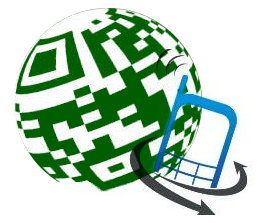Many modes of public transportation are available in greater Lausanne which can be purchased in a single ticket or pass of various durations and combinations. There are small commuter boats, larger boats, paddle steamer boats, large buses, electric tramways, shuttle buses, taxis (some with ski racks), small trains, regular trains and 2 perpendicular (precisely east-west, north-south) metro lines (one of which is a new high speed automated 4-mile long metro that goes nearly straight up from the shores of Lake Geneva to the top of the city limits with an altitude gain of 984 feet! More on that coming in Part II).
Considering the hills (steep) and the valleys (narrow) of Lausanne, it is not difficult to appreciate having a public transportation system that is comprehensive, efficient and always on time. The foundation of the system which is named TL transport Lausanne (“Transports publics de la region lausannoise”) is the electric tramway – one of the first electric streetcar systems in Europe (1896) since the “Lausannoises” were too soft hearted to force their horses to pull large carriages uphill. That same electric tramway system is still paramount today in Lausanne and is constantly improving. It is affectionately known here as “le trolley”. I lived in Lausanne 10 years without ever driving (I have lots of carbon footprint credits) and nearly always arrived in advance of my gas guzzling friends regardless of the meeting point because the tramways oftentimes have their own lanes on the busy streets. Even living out of town now, I can still hike to a tram stop when going into Lausanne in order to avoid the traffic and near impossibility of parking (even some garages close at night and your car may still be there! Read the hours before entering if you must park).
There is an enormous amount of information about the entire system on the TL website including real time bus schedules and traffic problems, routes, zones (there are many!), tariffs (there are a lot of these also!). These days even Lost and Found is online. I used to have to go to Place St. Francois and look through the boxes of single black leather gloves (it’s amazing how they are all different and my missing glove was never there).
Although most of the TL website is in French there is one page in English with pdf links which gives a lot of general information on traveling around using all of the TL system in Lausanne. However, the following are some good pointers to get you started riding around this delightful Swiss city with confidence on “le trolley”.
Follow the SignsYou can always recognize the nearest tramway stop (usually benches in a roof covered shelter) as there will be a TL sign with the bus stop name and a bus number (or numbers) and a symbol of a bus. You will also find the systems map posted (with zones and transfer points) as well as the time table for the trams stopping there and a payment kiosk.
Place St. Francois is the hub of the tramway system in the center of Lausanne which eventually (and very timely) connects with all the other modes of transportation to some far reaching outlying areas.
Place St. Francois is also the most confusing tramway stop(s) for first riders. Look at the transportation map located at all individual stops at St. Francois to find the bus number you want and then look for that number posted on the roof of one of the tram stops or on a sign and stand there. Since there are several tram stop places on both sides of the street at St. Francois, you also need to know which direction you need to go. The advantage of the St. Francois and some of the larger tramways stops, is that there are monitors that tell you when the next bus of each tram line is arriving. Sometimes there is more than one bus line to get you where you’re going and you can save time.
The best approach to using the tramways in Lausanne is to plan ahead, especially if you are going to change trams.
Ask the front desk, concierge, or your friends or people at a bus stop (they might surprise you and speak English). There is also an Infoline: 0900 564 900 (CHF -.86/min) that may be able to give you specific instructions for your journey of the day visiting Lausanne.
Point to point is fairly simple (if you get the direction right which is the name of the last stop on that line that appears on the front and side of the tram).
The image above covers just the center of Lausanne. Online you can find a more comprehensive map with changeable size and specific location details. So now hear this. I’m coming straight out with it; the systems map is complicated because the public transportation system is extensive in Lausanne despite its moderate size, and unless you really know the city, you will need some help if you have to transfer. But when you look at that systems map, remember that (hilly) Lausanne streets are on many levels and you really need 3D glasses to visualize it correctly. I still encounter challenges when looking for transfer points on the map that are, in fact, at the same altitude!
In addition to the name and number of the tramway line posted on the roof of the tram stop, look for the bus symbol that is posted along side. If it has a hand across it, then you must wave down the bus. If there is no hand, it means the tram stops there regularly.
If you are going to spend some time riding around in Lausanne you may want to download a cell phone application from TL (just need a camera and web access) that will read a bar code at the tramway stop and tell you in real time when the bus will arrive.
Ticket to RideBe sure to buy your ticket before you board the tram. You can usually board at any door (the front door is for people with special needs). Although the Lausanne tramways use the honor system and the driver does not check your ticket, there are occasional “controls” and it’s cash-on-the-spot-expensive if you’re without one. If you end up out in a rural zone, sometimes you must buy the ticket from the driver if there is no kiosk.
There are 100s of payment plans for all situations, number of zones, discounts for age, length of travel time, number of days, special ½ price (on 100s of other plans) for qualified residents, as well as various combination unlimited usage cards with other transportation companies, etc. Do not bother trying to understand the tariff online. It’s incomprehensible. If your hotel cannot help you, ask the tourist office (at Ouchy or the Lausanne Train station). Depending on your needs and situation, you may qualify for a discount or special offer that they may be having in conjunction with visiting Lausanne at that time.
When all else fails, if you don’t go too far out of the city limits, you’re most likely in zone 11 (a dozen zones are posted) and you can buy an adult ticket for CHF 2.60 which is good to go anywhere in that zone for one hour. You can see that this can add up quickly. There is also an unlimited all day card which is, at the moment, CHF 7.60. Both of these can be purchased at all tramways stops in the city with kiosks with cash (basically for tourists, only cash, unless you bank at the Swiss Post Office). However, some of the bigger tram stops in the city have digital kiosks now that take international credit cards. If you don’t want to carry cash and will do a considerable amount of tram traveling, you can also buy a Galaxy card for either CHF 20 or CHF 50 that you can use in the kiosk for purchasing individual tickets on the entire TL system.Taking the Tram
It is important that you have something to hold on to in the tram if you’re standing because besides sometimes jerking, these trams go up and down steep hills and you and your things (like your children) could go flying.
When it rains, the trams tend to steam up so sit or stand where you can you see the monitor up front with the names of the stops (always know the name of the stop just before you want to get off so you can prepare without disturbing people or missing your stop. The stops are not always close to each other and you may find yourself walking a great distance back to the one you wanted.
Tramways and buses do not always stop unless you push the button usually near the door in advance. There are special buttons to push to indicate to the driver if you need wheelchair, stroller or bicycle assistance to be implemented.
Tram Etiquette
- Don’t put your bags on a seat so no one will sit there (that might be a local’s “special” place even if there are other seats!). But if you must, remove your things when the bus is full and put them on the floor and stand with them so they don’t fly around. Many local people have non-paper permanent shopping bags, carts and baskets which won’t fall apart due to a wet floor in the tram. I have found that the floor will only be wet if I’m carrying paper bags.
- Don’t take a seat on a crowded bus if you’re only going 1 stop unless you absolutely must sit.
- Don’t have loud conversations on the tram unless you are under 16.
- Don’t get angry if you run to the tram, push the door button and the tram still pulls away. The driver is obliged to leave as the system has probably already been put into motion and it takes too long to close it down and start over. That’s why the trams are always on time: with or without you!

- Do wait for special needs passengers (bicycles, strollers, etc) to get off before getting on.
- Do help people with strollers get off the bus.
- Do leave the front seats empty for fragile passengers that enter the front of the tram.
- Do work your way to the exit when your stop is coming up to avoid chaos in trying to get out (sometimes that’s not easy to do, especially on a steep hill or curvy street so hang on if you can).
- Do call 0800 805 805 in advance for a “Taxibus Matin” to pick you up at the nearest bus stop to your lodging if you need to go to the center of Lausanne as early as 4:45 AM when the trams are not yet operating (only CHF 4 supplement on your regular TL ticket)
- Do call 0800 805 805 in advance for a “Taxibus Nuit” if you are near certain city center tram stops after midnight when the tramway system closes and get a ride to the nearest bus stop at your place of lodging (only CHF 4 supplement on your regular TL tickets).
- Do take the “Pyjama Bus” especially scheduled for clubbers in the wee hours of the morning Friday to Sunday who have imbibed a bit more than the legal driving limit of alcohol (which is nearly 0). There are 30 departures from the hot spots heart of Lausanne to more than 80 communes in the region. No excuse for driving and it’s only CHF 2 plus the regular bus tariff to pay.
- Do thank the city of Lausanne for making it possible to never have to rent a car and to think of you even when their tram system is closed by offering you around the clock reasonable public transportation.
Stay connected for Transportation in Lausanne? Part II coming soon. Follow me on Twitter where I announce all my new blogs and much more. Bon voyage!
[All Images courtesy of TL transport public]
Tags: boats, bus, Lake Geneva, Lausanne, metro, Ouchy, Swiss, Switzerland, taxis, trains, tram, tramway, trolley, “paddle steamer”, “Place St. Francois”, “public transportation”













































































8 Comments
Great post! I’m bookmarking this!
good info …
good pointers !!!
Thanks subcorpus. I see from your site that you’re a specialist. Best to you
Well. Not really what I expected, but you’ve created me believe about this topic from one more perspective. Terrific job.